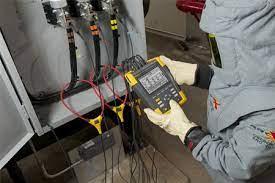The power quality equipment market has experienced significant growth and innovation in recent years, driven by the increasing need for reliable, efficient, and stable power supply across industries. Power quality equipment—including uninterruptible power supplies (UPS), voltage regulators, harmonic filters, surge protectors, and energy storage systems (ESS)—plays a vital role in ensuring the integrity of electrical systems by protecting sensitive equipment, maintaining energy efficiency, and stabilizing grid operations. As industries adopt new technologies and renewable energy sources, the market is witnessing several key enhancements that promise to revolutionize the power quality landscape.
1. Integration of Smart Technologies
One of the most significant enhancements in the power quality equipment market is the integration of smart technologies. With the rise of smart grids and Internet of Things (IoT), power quality devices are becoming increasingly connected and intelligent. Smart UPS systems now feature advanced remote monitoring capabilities, allowing users to monitor power quality in real time and receive alerts for potential issues. These devices are equipped with predictive analytics that enable predictive maintenance, helping businesses avoid costly downtime due to power disruptions.
Smart meters and real-time monitoring systems are also transforming how power quality is measured and managed. These tools help identify and address power quality issues proactively, improving the reliability of power delivery and reducing energy consumption.
2. Energy Storage Systems and Renewables Integration
Another major enhancement is the advancement of energy storage systems (ESS), particularly in the context of renewable energy integration. As more regions adopt solar, wind, and other intermittent energy sources, power quality becomes a critical challenge. Energy storage systems play a pivotal role in balancing supply and demand by storing excess energy during periods of high generation and releasing it during times of low generation. Lithium-ion batteries, flywheels, and pumped hydro storage are becoming more efficient, reliable, and cost-effective, enabling seamless integration of renewable energy into the grid without compromising power quality.
ESS helps stabilize voltage, mitigate fluctuations, and enhance the overall efficiency of energy systems. This technology is especially beneficial in microgrids, where distributed generation sources and energy storage work together to maintain grid stability.
3. Eco-Friendly Solutions and Sustainability
Sustainability is a key focus for businesses and industries seeking to minimize their environmental impact. Power quality equipment manufacturers are increasingly prioritizing eco-friendly designs that support green energy initiatives and reduce the carbon footprint. Solar-powered energy storage systems and high-efficiency UPS units are becoming more common as organizations strive to meet sustainability goals while maintaining reliable power.
The demand for energy-efficient devices has led to innovations in UPS technology, which now use advanced inverter technology to minimize energy losses. Additionally, the use of advanced materials and designs in components like transformers and filters has improved overall efficiency, lowering operational costs for businesses.
4. Advancements in Harmonic Mitigation
As industries become more reliant on non-linear loads—such as computers, LED lights, and variable-speed drives—the occurrence of harmonic distortions in electrical systems has increased. Harmonic filters have been enhanced to better mitigate these distortions, ensuring that power remains clean and stable. Modern harmonic filters can now handle a broader range of frequencies, improving the overall quality of electricity and reducing the risk of equipment failure and inefficiency.
Active harmonic conditioners are also gaining popularity as they can dynamically adjust to changing conditions, providing real-time solutions to harmonic problems. These advancements in harmonic mitigation help industries avoid expensive equipment damage, reduce energy consumption, and improve the reliability of power systems.
Conclusion
The power quality equipment market is witnessing exciting enhancements that are reshaping the future of electrical power management. From smart technologies and predictive maintenance to advancements in energy storage and harmonic mitigation, these innovations are helping businesses and industries achieve higher levels of efficiency, reliability, and sustainability. As the demand for uninterrupted, high-quality power continues to rise, these technological advancements will play a crucial role in ensuring that power systems remain resilient and future-ready, meeting the evolving needs of the global energy landscape.



